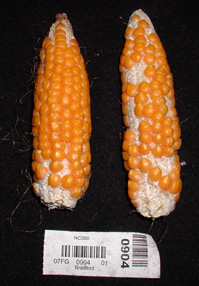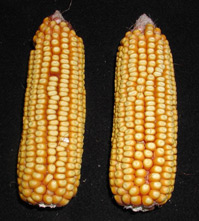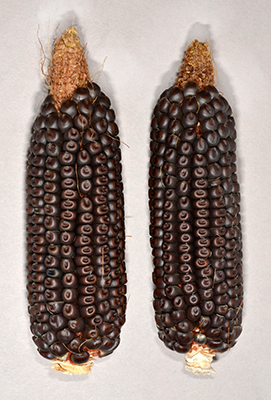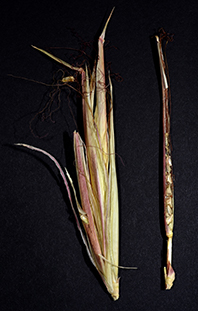NC350

The maize inbred genotype NC350 is a temperate-adapted, all-tropical line that can be used to breed in pro-vitamin A production. NC350 is a founder line in the nested association mapping (NAM) population developed in 2009. Crosses between B73 and NC350 were used to detect candidate genes for aluminum tolerance by Allison M. Krill and associates in 2010. Characteristics of NC350 include orange seeds that fade to deep yellow with age, a delicate tassel with anthers clustered like beads on a string, very thin and pale silks, and tight husk leaves that resist insects.
Access Data
B73

The maize inbred genotype B73 was developed in Iowa and registered by W.A. Russell in 1972. B73 is a parent of many elite breeding lines and is widely used in commercial hybrid seed production across the United States. It was the source material for sequencing and assembly of the first maize reference genome in 2009. B73 is a parent of the Inter-mated B73-Mo17 (IBM) population developed in 2002 and the common parent for the 25 families of the nested association mapping (NAM) population developed in 2009. Characteristics of B73 include yellow kernels, susceptibility to earworm and fall armyworm in the winter nursery, and a fragile tassel that breaks off easily during crossing.
Access Data
W22

The maize inbred genotype W22 is a temperate common genetic stock developed in Wisconsin which has also been widely used in the maize genetics research community. A large number of mutant populations were built based on various sub lines of W22, e.g. the Ac/Ds and UniformMU transposon insertion collections. Characteristics of the W22 stock used include purple seeds, as a result of the introgression of C1 and R alleles from a purple stock into the original colorless W22 inbred that contain the recessive c1-p and r-r:W22 alleles; susceptibility to smut and Fusarium ear rot; a strong multi-branched, red-anthered tassel that rarely breaks during crossing; a long ear shoot with green silks that regularly produces around 300 seeds when manually pollinated, and relatively broad leaves considering its average 6' to 7' height.
Access Data
Til11

The teosinte inbred line Til11 was developed and donated by John Doebley from University of Wisconsin. It belongs to the subspecies parviglumis. The name parviglumis means small glume, referring to the small tassel spikelets. The original plant used as the basis for the inbred line was sampled in Amatlan De Canas, Nayarit, Mexico. It is a robust line with a large tassel, produce large amounts of pollen and many tillers.


